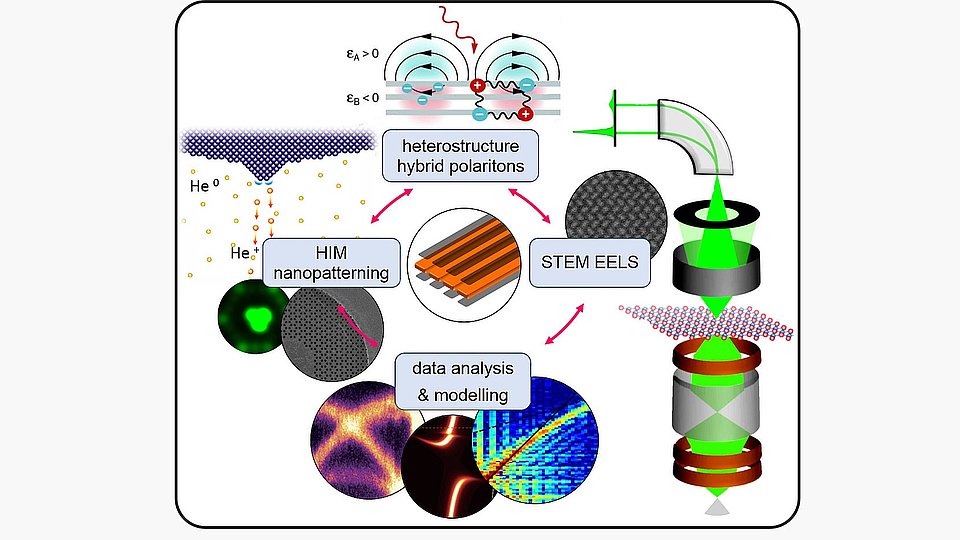Polariton Tuning
In two-dimensional (2D) materials, light-matter interaction can be significantly enhanced by polaritons. A polariton is a quasiparticle that results from coupling between an electromagnetic wave, such as light, and a dipole carrying excitation in matter. Typical matter excitations are collective oscillations of free electrons (surface plasmon polaritons), lattice vibrations (phonon polaritons) or lifting electrons from the valence to the conduction band (exciton polaritons). Polaritons lead to changes in charge transport, chemical reactivity and local potentials, but may also provide for extreme light localization and an enhanced density of electromagnetic states. Stacking of different 2D materials enables coupling of polaritons to hybrid modes with a large degree of tunability in the type of excitation, their coupling strength, and their localization and propagation behavior. Thereby, 2D heterostructures can serve for on-demand design of extraordinary physical properties.
Here, we focus on hybrid polaritonic modes with nanoscale confinement and low losses for possible applications in light-based future information technology. 2D heterostructures from single-crystalline silver or graphene with hexagonal boron nitride (hBN) constitute our platform for tunable hybrid modes of plasmons and phonons. He ion beam nanopatterning will allow to modify geometries with an accuracy < 5 nm for the precise adjustment of both, the separate excitations and the coupling strength between them. Using low-loss scanning transmission electron microscopy (STEM) electron energy-loss spectroscopy (EELS), complete dispersion relations will be obtained. Hybrid modes will be mapped with a simultaneous spatial resolution of < 1 nm, energy resolution of < 6 meV, and momentum resolution of < 0.2 nm-1. By using the electron beam as a pulse and a probe simultaneously to excite and probe selected modes, unprecedented spatial and energy resolution will be combined with fs temporal resolution. Given the extremely high spatial resolution of both, fabrication and analysis techniques, a large parameter space for investigation will be realized on a single sample.
This project is funded by the German Research Foundation (DFG) under grant no. HO 5461/5-1 and is a member of the DFG Priority Programme 2244: 2D Materials – Physics of van der Waals [hetero]structures. The work is carried out in close collaboration with Humboldt-Universität zu Berlin and with the CoreLab Correlative Microscopy and Spectroscopy of Helmholtz-Zentrum Berlin.
